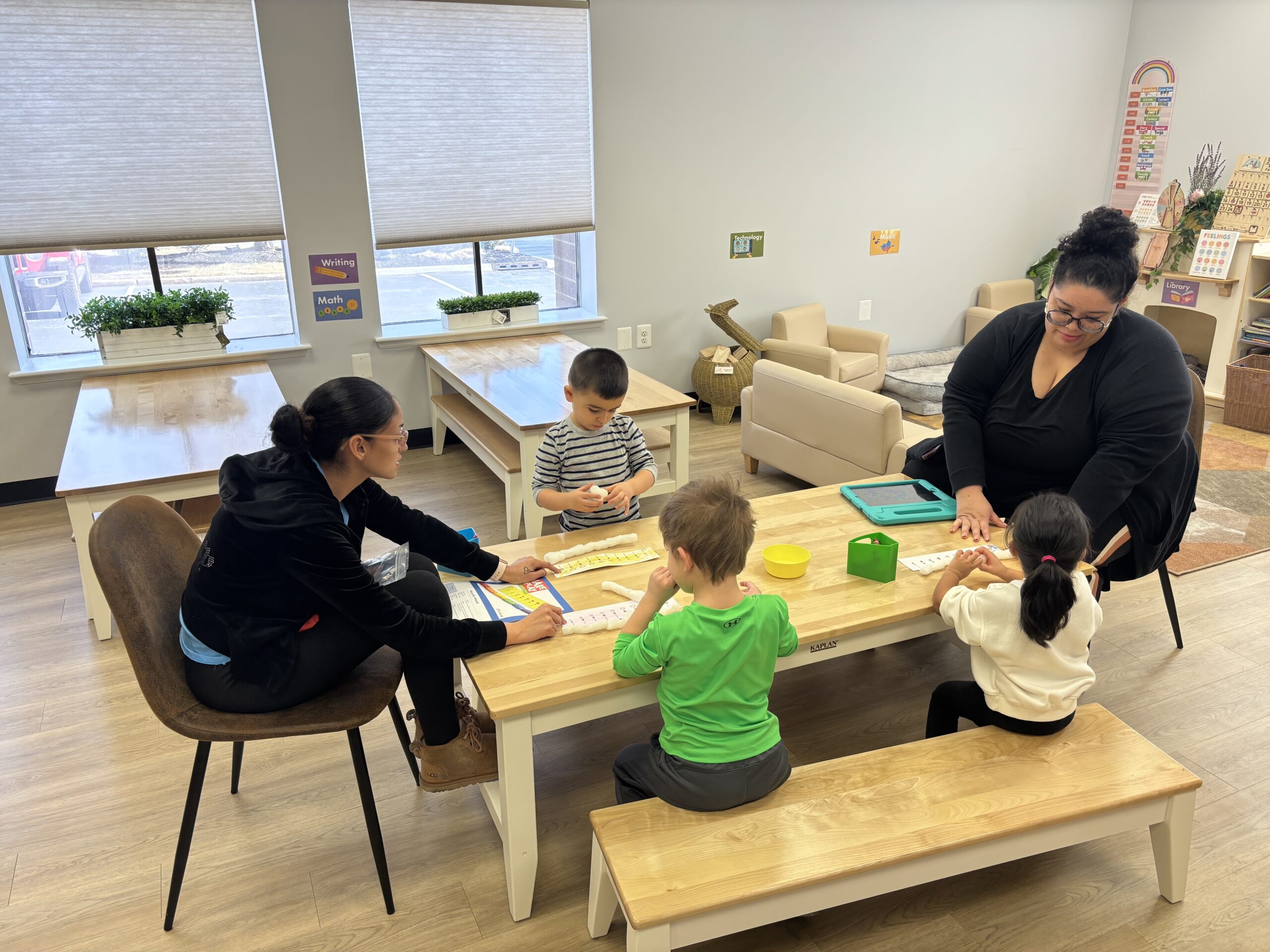The Co-Teaching Model in Early Childhood Education

What is the Co-teaching Model?
The co-teaching model involves two or more educators collaboratively planning, instructing, and assessing a group of children within the same classroom. Unlike traditional teaching settings where one teacher leads the classroom while others play supporting roles, co-teaching establishes a partnership of equals. Both educators actively engage in all aspects of the teaching process, ensuring a shared responsibility for the success of every child.
Co-teaching is particularly prevalent in inclusive classrooms, where general education and special education teachers work together to meet the diverse needs of all students. However, this model has been widely adopted in early childhood education settings for its ability to enhance learning outcomes and support both children and educators.
Why Is Co-Teaching Beneficial in a Childcare Setting?
Enhanced Individualized Attention
In early childhood classrooms, children have varying developmental needs, learning styles, and social-emotional profiles. Co-teaching allows educators to provide more individualized attention, ensuring that each child receives the support they need. With two teachers present, one can focus on small-group or one-on-one interactions while the other facilitates larger group activities.
Diverse Perspectives and Skills
Each educator brings unique strengths, experiences, and teaching styles to the classroom. This diversity enriches the learning environment and provides children with varied approaches to problem-solving, communication, and creativity. For example, one teacher might excel in hands-on learning activities, while the other focuses on literacy development, creating a balanced and dynamic classroom experience.
Improved Classroom Management
Managing a group of young children can be challenging, especially during transitions, meals, and playtime. The co-teaching model ensures that no child is overlooked and that educators can better manage the classroom. One teacher can address behavioral challenges while the other continues the lesson, minimizing disruptions and maintaining a calm and productive environment.
Support for Educators’ Well-Being
Teaching can be demanding, especially in early childhood settings where educators play a crucial role in fostering young children’s growth and development. Co-teaching reduces the burden on individual teachers, preventing burnout and promoting collaboration. It also provides opportunities for peer mentoring, professional development, and shared problem-solving.
Research-Based Evidence Supporting Co-Teaching
Positive Outcomes for Children
Research shows that co-teaching has a significant positive impact on young learners. A study published in the Journal of Early Childhood Research found that children in co-taught classrooms demonstrated higher levels of engagement, improved social-emotional skills, and better academic outcomes compared to those in traditional single-teacher classrooms. These benefits were especially pronounced in inclusive classrooms where co-teaching allowed for differentiated instruction tailored to each child’s needs.
Enhanced Educator Collaboration
A study in the International Journal of Early Years Education highlighted that co-teaching fosters a culture of collaboration and mutual respect among educators. Teachers in co-teaching settings reported feeling more supported, confident, and effective in their roles. This collaborative environment also encouraged continuous professional growth, as educators learned from each other’s strengths and strategies.
Reduced Teacher Burnout
The National Association for the Education of Young Children (NAEYC) emphasizes the importance of teacher well-being in delivering high-quality early childhood education. Research indicates that co-teaching can alleviate stress and reduce feelings of isolation among educators, contributing to greater job satisfaction and retention rates.
Implementing Co-Teaching in a Childcare Setting
Establishing Clear Roles and Responsibilities
For co-teaching to be successful, educators must establish clear roles and responsibilities. This involves open communication, regular planning sessions, and a shared vision for the classroom. Common co-teaching strategies include:
- Team Teaching: Both teachers share equal responsibility for instruction, seamlessly taking turns leading lessons.
- Parallel Teaching: Teachers divide the class into smaller groups, delivering the same content simultaneously.
- Station Teaching: Educators lead different learning stations, allowing children to rotate and experience varied activities.
- One Teach, One Support: One teacher takes the lead while the other provides individual or small-group assistance.
Building Strong Communication
Effective co-teaching relies on strong communication between educators. Regular check-ins, collaborative lesson planning, and constructive feedback are essential for maintaining a harmonious partnership. Using tools like shared digital calendars, collaborative planning software, and reflective journals can streamline communication and enhance efficiency.
Cultivating a Collaborative Culture
Administrators play a crucial role in fostering a culture of collaboration within childcare settings. Providing professional development opportunities, encouraging peer observations, and offering time for co-planning are vital for supporting co-teaching teams.
Beyond the Classroom: Benefits for Educators
Professional Growth
Co-teaching provides educators with opportunities to learn from one another. Teachers can observe new instructional techniques, gain insights into classroom management strategies, and expand their repertoire of teaching methods. This collaborative approach promotes ongoing professional development, enhancing educators’ skills and confidence.
Emotional Support
Teaching in early childhood settings can be emotionally taxing. Co-teaching offers a built-in support system, allowing educators to share challenges, celebrate successes, and navigate complex situations together. This partnership fosters a sense of camaraderie and shared purpose.
Addressing Potential Challenges
While co-teaching offers numerous benefits, it is not without its challenges. Educators may face issues such as:
- Differing Teaching Styles: Misalignment in teaching philosophies or approaches can create tension.
- Lack of Planning Time: Coordinating schedules for planning and communication can be difficult in busy childcare settings.
- Unequal Workload: Imbalances in responsibilities can lead to frustration and conflict.
To address these challenges, administrators and educators should prioritize:
- Open and honest communication.
- Professional development focused on collaboration and conflict resolution.
- Regular check-ins to assess and adjust the co-teaching dynamic.
Conclusion
The co-teaching model is a powerful approach to early childhood education, offering significant benefits for children, educators, and the broader childcare community. By fostering collaboration, enhancing individualized attention, and supporting professional growth, co-teaching creates a dynamic and inclusive learning environment where every child can thrive. While challenges exist, thoughtful implementation and ongoing support can ensure the success of this model, making it an invaluable asset to any childcare setting.
References
For more information about co-teaching - An Introductions to Co-Teaching Models in Early Childhood Education

Sejal Dave, Owner and Director
Peacock Learning Academy


